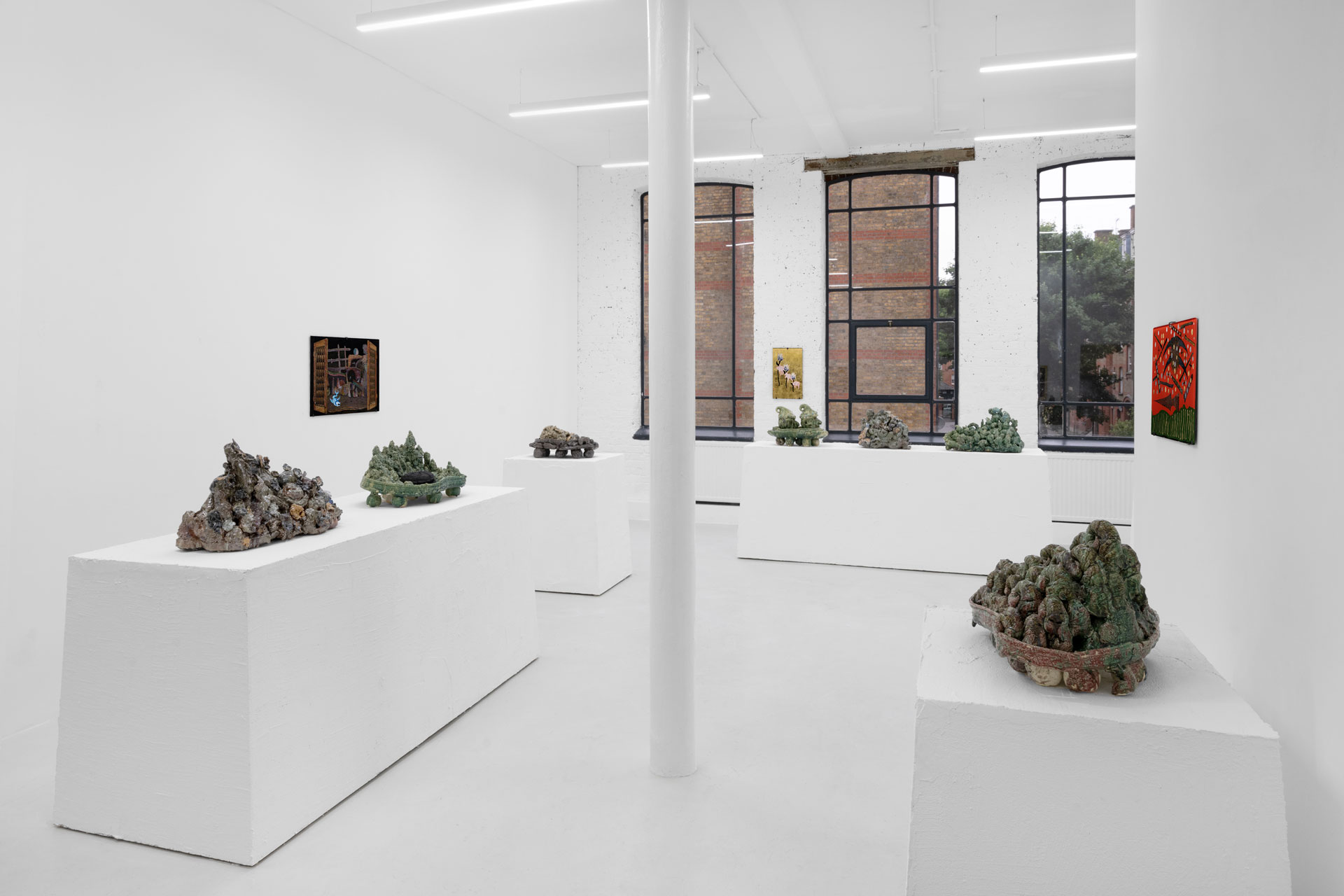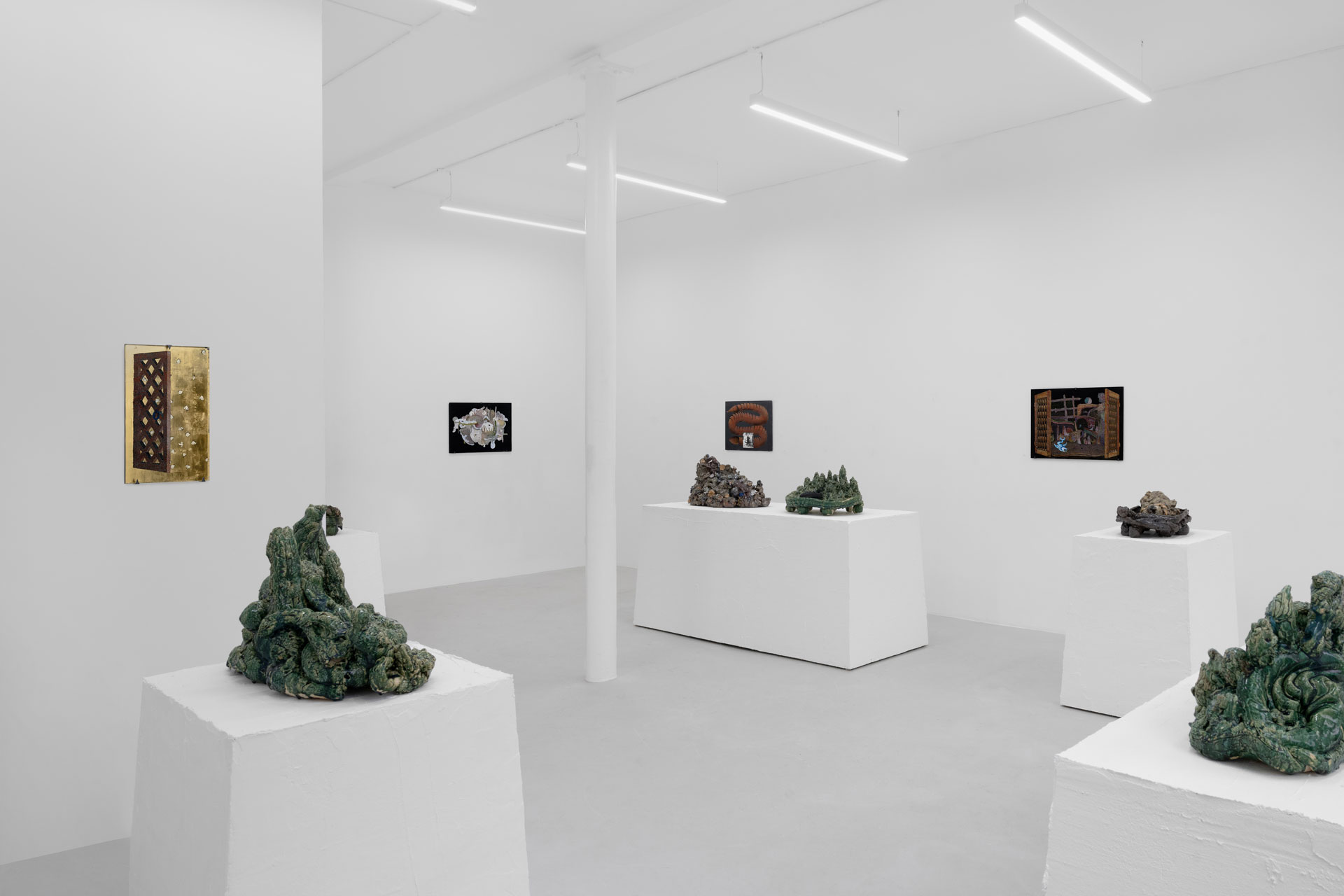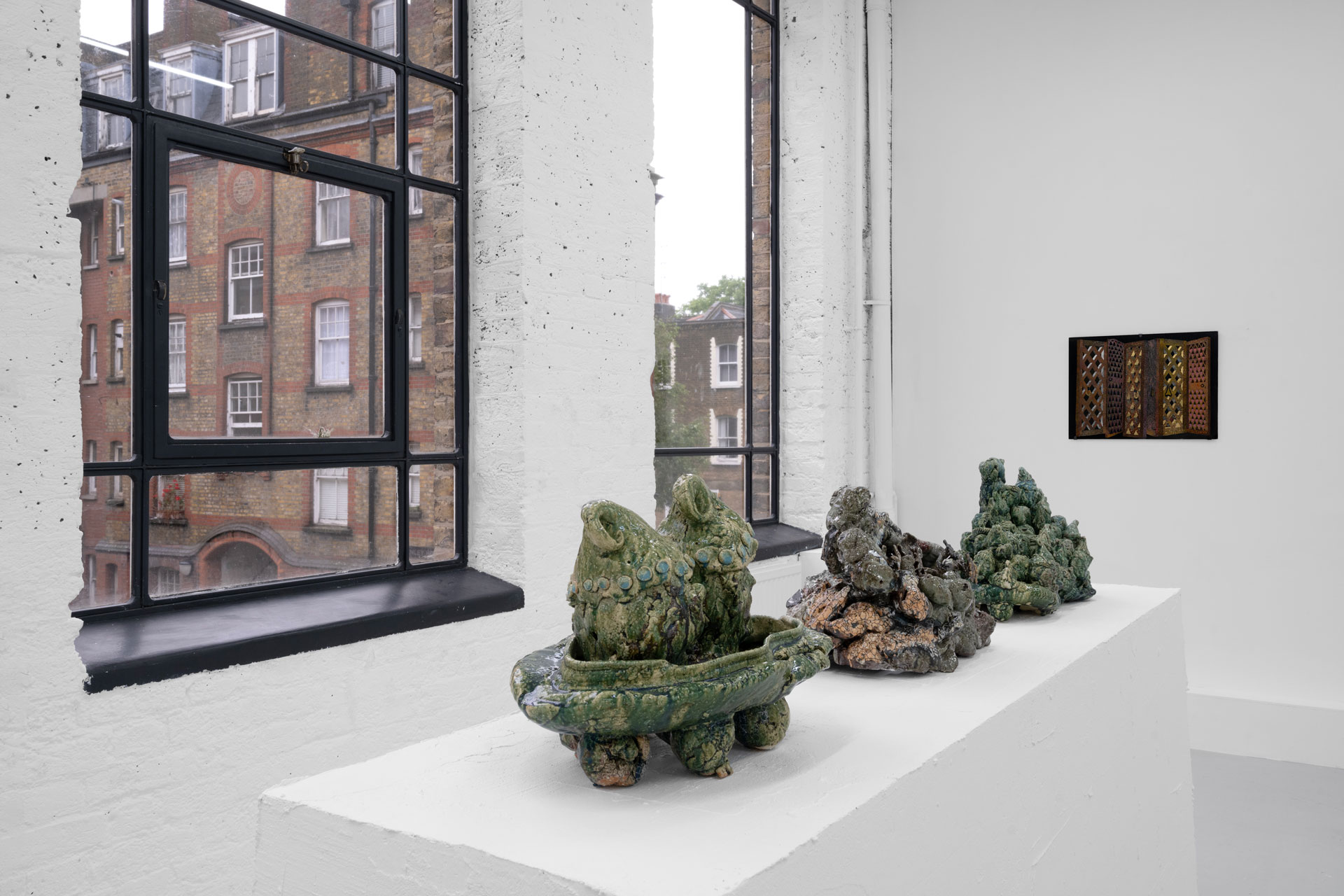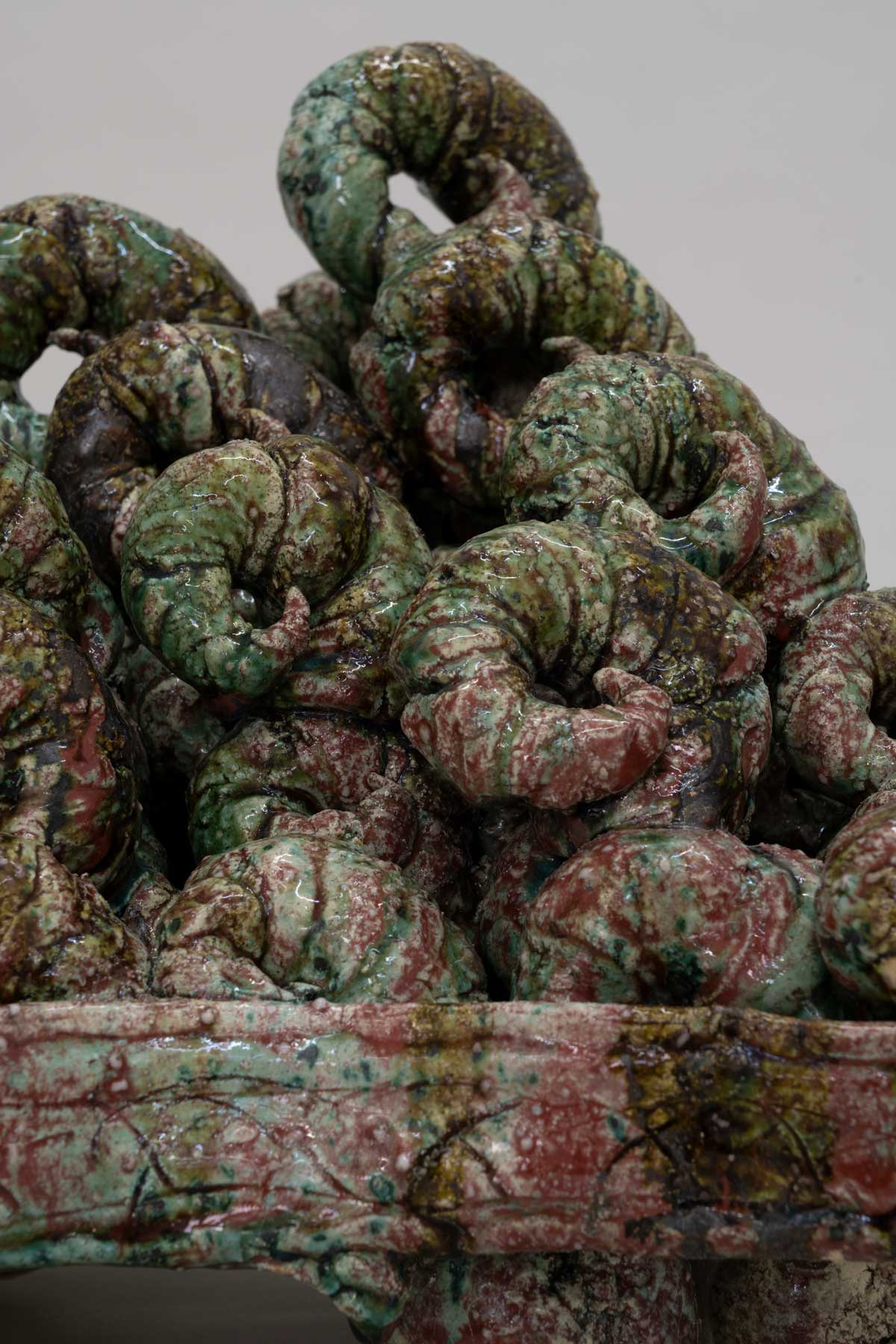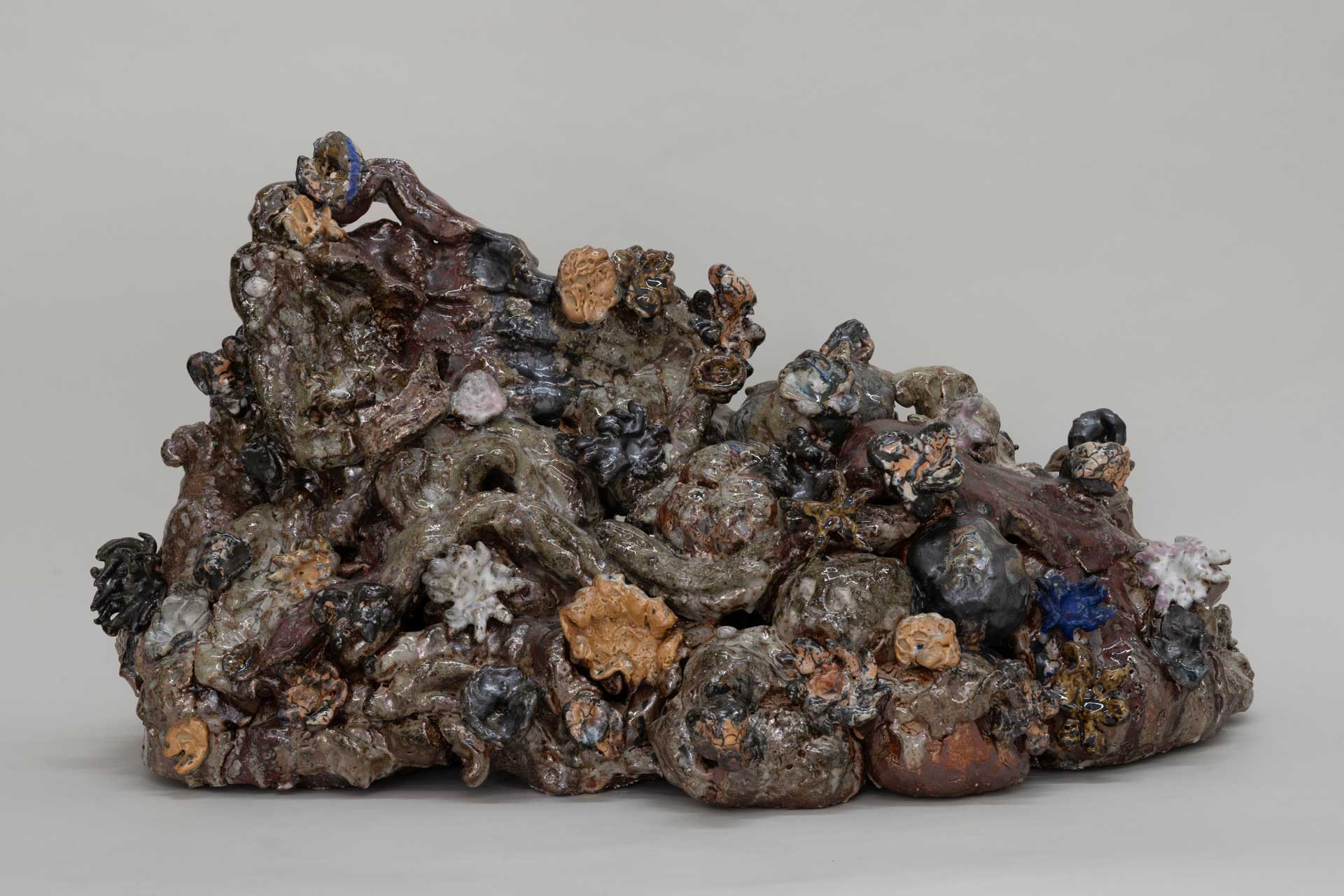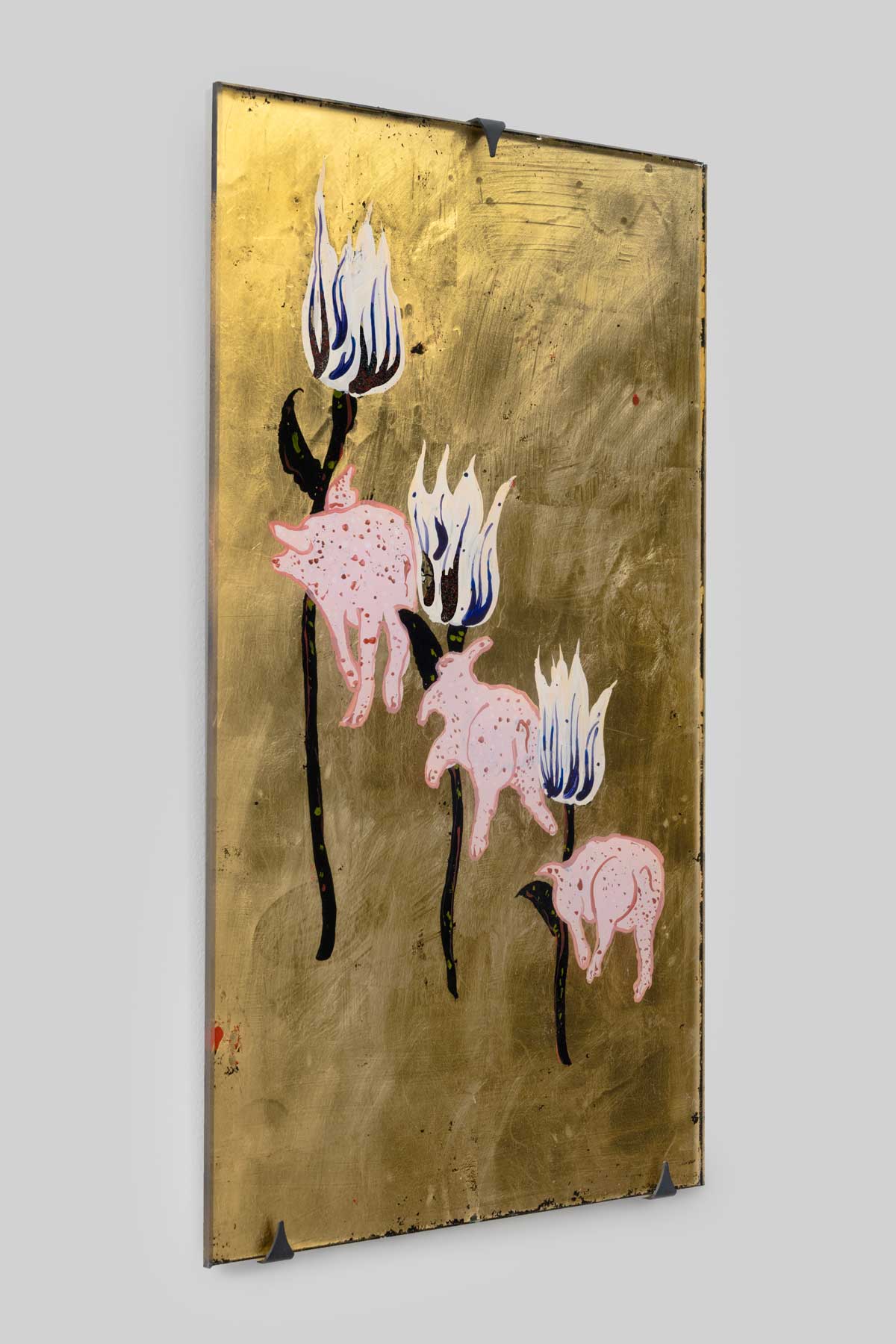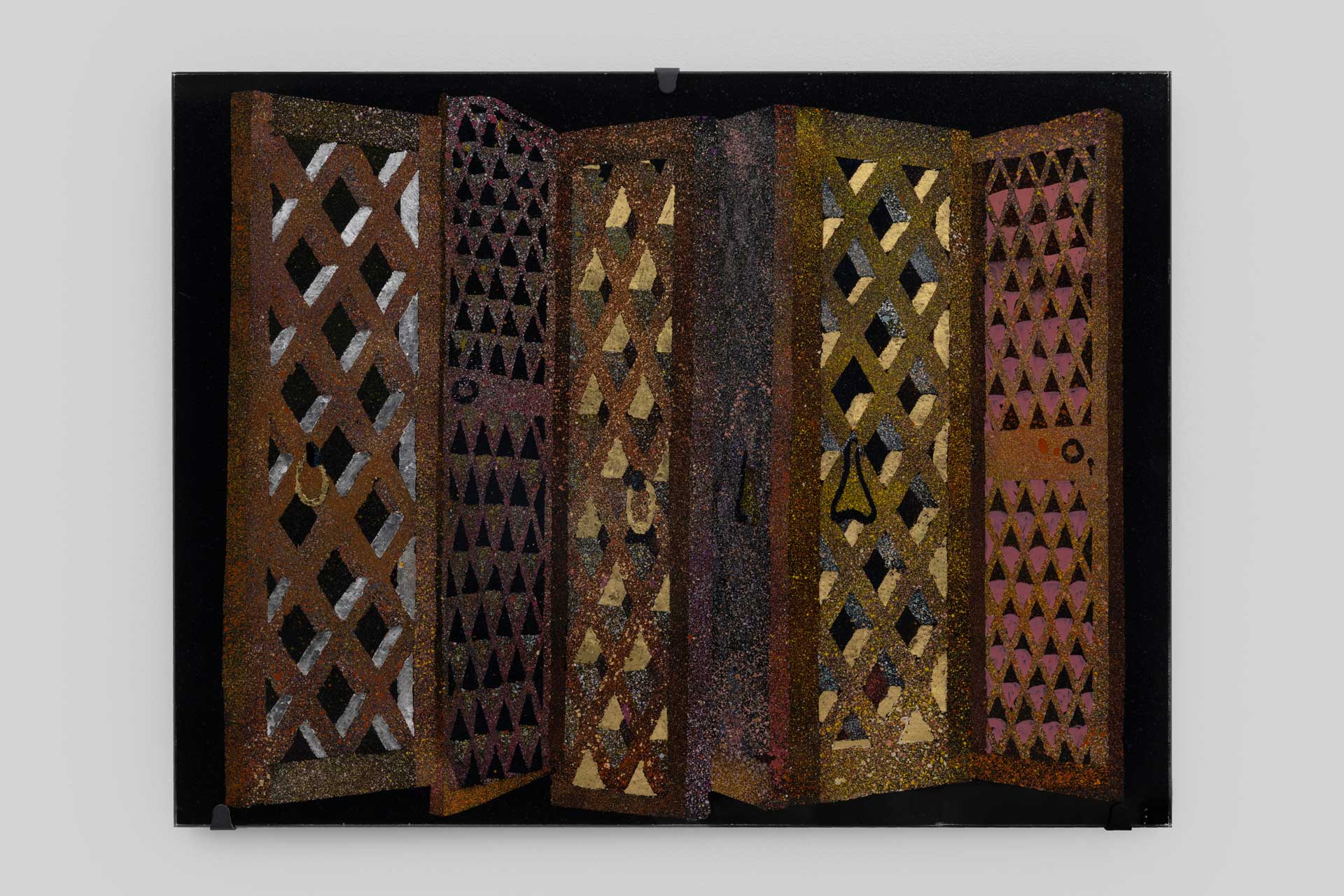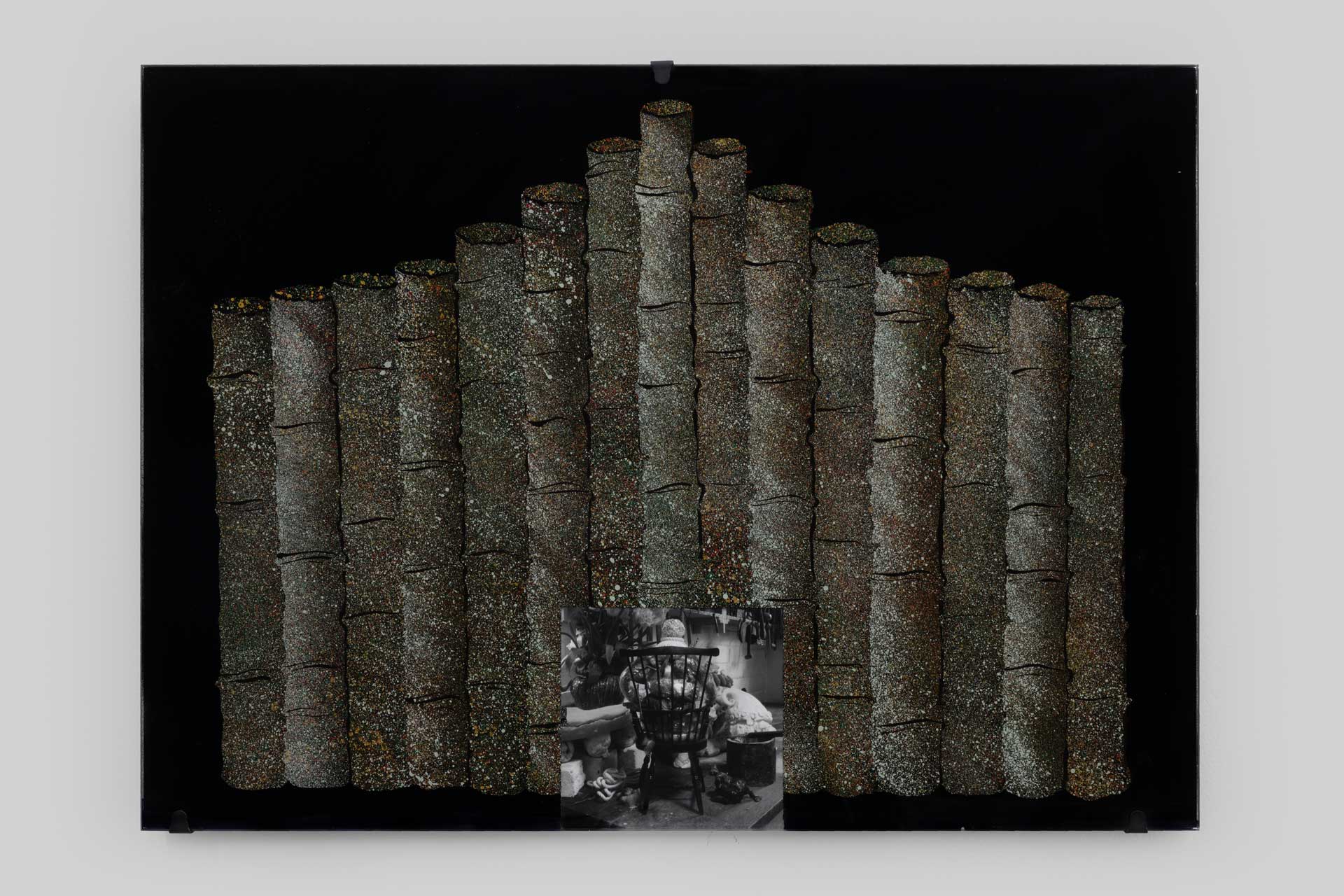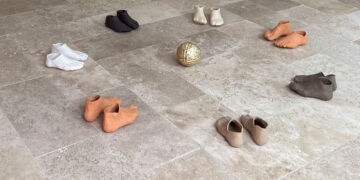Angell says of the psychedelia line “I just thought it was a funny thing to say. The joke really is calling it a radical pottery: you can’t be radical within that medium, because it’s mankind’s oldest material. Everything has been done with it pretty much.” Yet Angell is responsible for a resurgence in interest in its use in British contemporary art, both through his own practice and the residency programme at Troy Town, which has seen the likes of Enrico David, Anthea Hamilton and Thiago Mestre produce incorporate clay into their work, many for the first time under Angell’s guidance. It is here too, in this white brick space, lined with books and tools and previous experiments, that Angell makes his own work, most recently for Not All On Show, a show at nearby Ilenia gallery. His sculptures are great fantastical lumps, murky organic-seeming constructions of fired clay with shimmering glazes that follow a lineage of English folkloric weird: Tray with Two Capped Heads featured two elf-like busts flanking a basin, the whole work glazed in shiny green and made in the oribe style, a Japanese ceramic tradition; Caterpillar Engine 13, seems a mass of lychens, shells and other such encrusted ephemera in a forested mix of browns, yellows and greens.
Angell prides himself in avoiding off-the-shelf glazes and the material list of the latter is highly technical: ‘Shino Americàin, reduced English stoneware with iron and feldspathic inclusions, carbon trap shino and polychrome glazes’ reads the gallery’s handout. “There’s a lot of experimentation with glazes, especially in the early days with the electric kiln, trying to create a real polychrome of colours,” the artist says.
Aaron Angell, Not All On Show, 2025. Exhibition view at Ilenia Gallery. Courtesy of the gallery.
“It became about trying to reverse engineer classical glazes, almost extinct glazes. It is like trying to bring a recipe back from just a photograph or something. I’ve been working on this broken white glaze for two years, for example, specific to a particular region in Japan, actually specific to one family in that region, and have barely made any progress in working out the recipe. I’m translating Japanese blog posts from 1997, alongside guesses based on similar glazes.” The aim, should he succeed, will be to have another addition to Troy Town’s ‘glaze library’, a set of ceramic medallions hanging on the wall inside the workshop. “I have to use a proxy address in Japan to order half the materials, and then basically fake import docs to get them out of the country.” Angell admits it’s a niche interest, but it’s what elevates his work: a commitment to the craft and its long history, without adhering to the rules of form. “If we crack the formula, no one will care but me. The only people that will care are people who are into tea ceramics, and I don’t plan to use it on tea ceramics, so it’s an entirely personal obsession.”
Aaron Angell, Tray with Clouds (detail), 2025. Sang de boeuf Oribe, reduced stoneware with feldspathic and hagi sand inclusions, copper saturate glaze, pine needle ash, post-firing acid soak, 13 x 21 1/4 x 15 3/8 inches.Courtesy of Ilenia Gallery.
Angell likes working within prescribed limits but, whether it’s Japanese export rules or kilnwork, finding ways to push them. He notes that when he makes a sculpture, carving and massaging the motifs and forms by hand, before taking it outside to fire, it is very hard to predict how it will come out and whether it will be a success. “It’s hard to control, there’s lots of strange things that happen. You put it in the kiln, something happens in the dark, something comes out. Good or bad, it is frustrating either way: if it’s bad it’s annoying, if it’s good, it’s infuriating because it is very hard to replicate.”
Aaron Angell, Caterpillar Engine 13, 2025. Shino Americàin, reduced English stoneware with iron and feldspathic inclusions, carbon trap shino and polychrome glazes,
15 3/8 × 27 1/2 × 13 3/4 inches. Courtesy of Ilenia Gallery.
At the Ilenia show he is also exhibiting half a dozen glass paintings, in which he is forced to paint ‘backwards’ on the reverse of a sheet of glass, that the viewer then sees from the font (but the artist is unable to while the work is wet). In one, Pig, tulip, pig, tulip, pig, tulip, three pigs prance past out of scale tulips, the composition made against a gold-leaf background; in Intarsia – shut Angell simply paints a concertinaed decorative screen. The screen reappears in Intarsia – Whitefly, this time shown from the side, so only one panel is seen, surrounded by the titular insect. The works resist category though lean into an array of vernacular cultures, suggesting a narrative or some kind of melodrama, but, like all good stories, leaving their subjects mostly unresolved. Angell is also an obsessive record collector, with a monthly show on NTS in which he plays vinyl rarities he sleuths out. It is a hobby that is burlesqued in his work. “I’ve always liked the pseudo literary reference of lyrics. In certain songs from certain kinds of eras, they sit somewhere between poetry and a literary reference. That way of describing things in song has, like, a kind of capability for interpretation or something.”
Aaron Angell, Pig, tulip, pig, tulip, pig, tulip, 2025. Hinterglasmalerei (reverse-painted glass), acrylic and precious metal on glass, blackened steel fixtures, 19 3/4 × 11 3/4 inches. Courtesy of Ilenia Gallery.
Aaron Angell, Intarsia – shut, 2025. Hinterglasmalerei (reverse-painted glass), ccrylic and precious metal on glass, blackened steel fixtures, 17 3/4 x 23 5/8 inches. Courtesy of Ilenia Gallery.
“Pulling out imagery and references from music feels not as serious as using literary references. So you can play with it more: it has already been interpreted through song, it already has a sense of ornamentation and colour to the words which you can play off.”
Aaron Angell, Bamboo Organ Painting, 2025. Hinterglasmalerei (reverse-painted glass), acrylic on glass with gelatin silver print, steel fixtures, 19 3/4 × 27 1/2 inches. Courtesy of Ilenia Gallery.
Without a record player at the pottery, he says it’s other people’s NTS online mix tapes that are invariably on the pottery stereo; put on both by himself, or residency artists, the young people involved in the gardenware project or the makers of the yakimono pottery that funds the programme (which include pots, plates, mugs and teapots). “If we’re really busy, it tends to just be like eight hours of dub reggae, because it’s a really good pace. You basically got the same BPM the whole day, it’s quite hypnotic.” The studio has grown to the point that it always seems full, a hive of activity with people forever popping by. Angell jokes that having his show at the gallery is nice, but in a way, unnecessary. “My life is kind of like a permanent open studio situation.”
Troy Town Art Pottery, London. Courtesy of the artist.
Iara Pimenta is an independent curator and writer interested in the intersections of art and architecture. Her projects look at the relationships between history and transformations in the built environment and how artworks propose new perspectives on collective memories and imaginaries. She has researched and written about exhibitions, institutions, and the work of artists and architects, especially from the Americas. She holds a master’s degree in Critical and Curatorial Practices from Columbia University and a professional degree in Architecture from the University of São Paulo. She has years of experience elaborating and planning exhibitions and public programs while collaborating with organizations and art galleries in São Paulo (Brazil) and New York. Her projects have been presented at the 3rd Istanbul Design Biennial (Turkey), Residency Unlimited (New York), Kunstraum (New York), Columbia University (New York), and Book Culture LIC (New York), among others.
To know more about Oliver Basciano: @olibasciano
To learn more about Aaron Angell: @aaron.angell
www.troytown.org.uk
Hero image: Aaron Angell, Flower Basket 3, 2025. Reduced English stoneware with iron and feldspathic inclusions, carbon trap shino and polychrome glazes, 12 5/8 x 16 1/8 x 14 5/8 inches. Courtesy of Ilenia Gallery.

